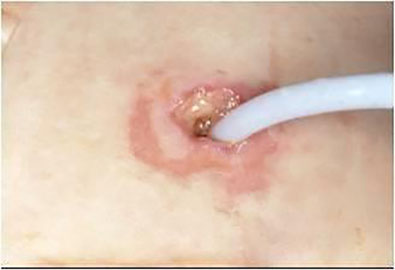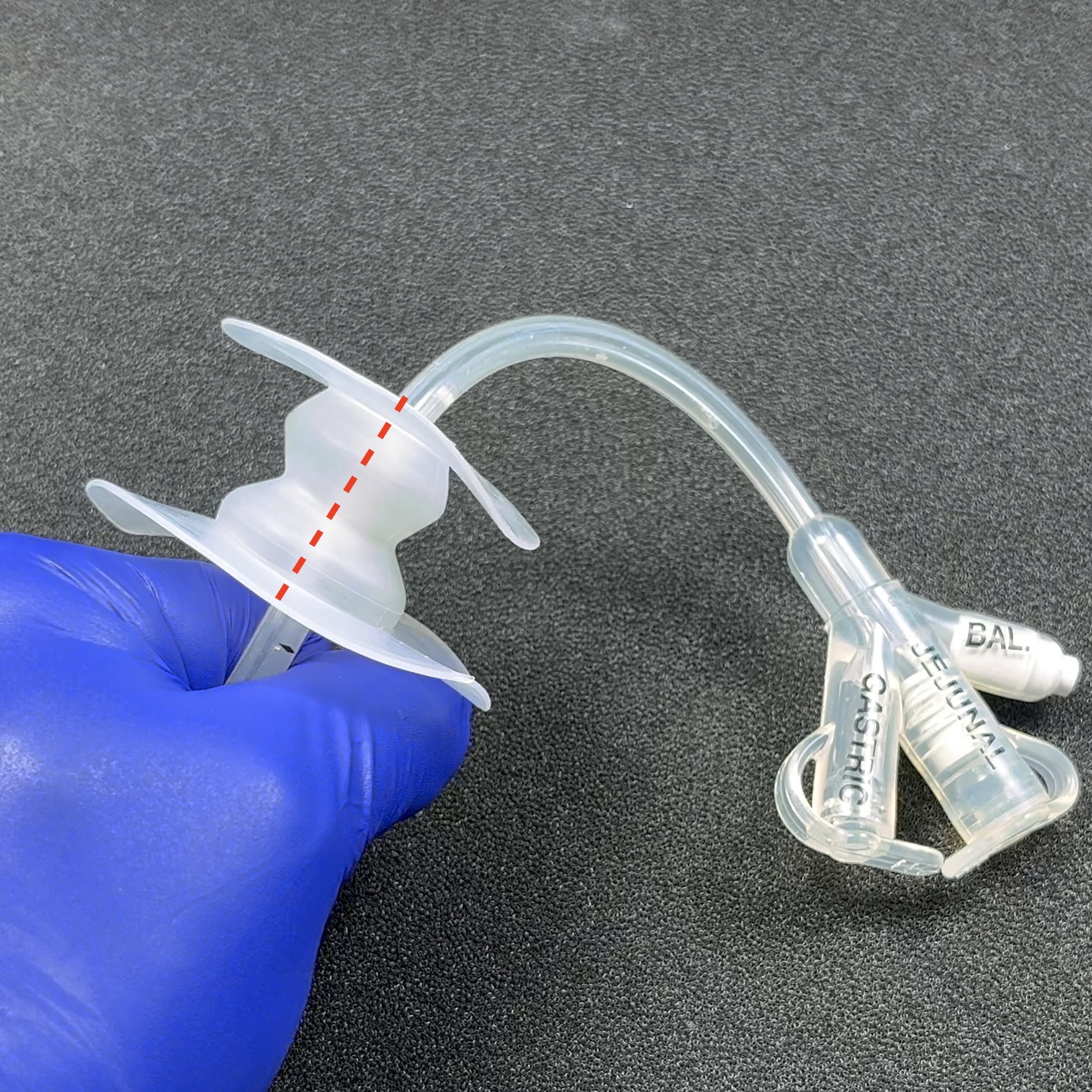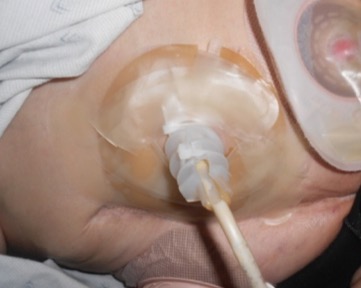Gastric fluid leakage or wound drainage around medical tubes is an unfortunate occurrence. The leaked fluid can cause skin irritation, infection, reduced healing times, and general patient discomfort. Leakage often occurs because patient movement rubs the tube against the insertion site and widens the incision over time

The Fistula Funnel can be used to stabilize tubes and reduce tube friction on the insertion site. The "how-to" steps follow.
1. As shown, place the bottom half of the Fistula Funnel around the tube prior to tube placement if possible.
If the tube is already in place, tailor the Fistula Funnel by cutting as indicated by the dotted line so it can be placed around the tube.

2. Place a contact layer followed by a flat ostomy barrier ring on the perimeter skin. Notch the flange to allow the device to flex, then place it around the tube so that the notched flange rests on the ostomy barrier ring.

3. Fasten the Fistula Funnel to the patient by placing adhesive strips on top of the base flange. Use zip ties or tape to fasten the Fistula Funnel to the tube. The stabilized tube should stand perpendicular to the patient's body.

This technique can stabilize PEG tubes and wound drains in order to reduce tube rubbing on the insertion site and mitigate incision widening. The Fistula Funnel and companion dressings can also help seal and protect the skin from leakage when applied as shown.
